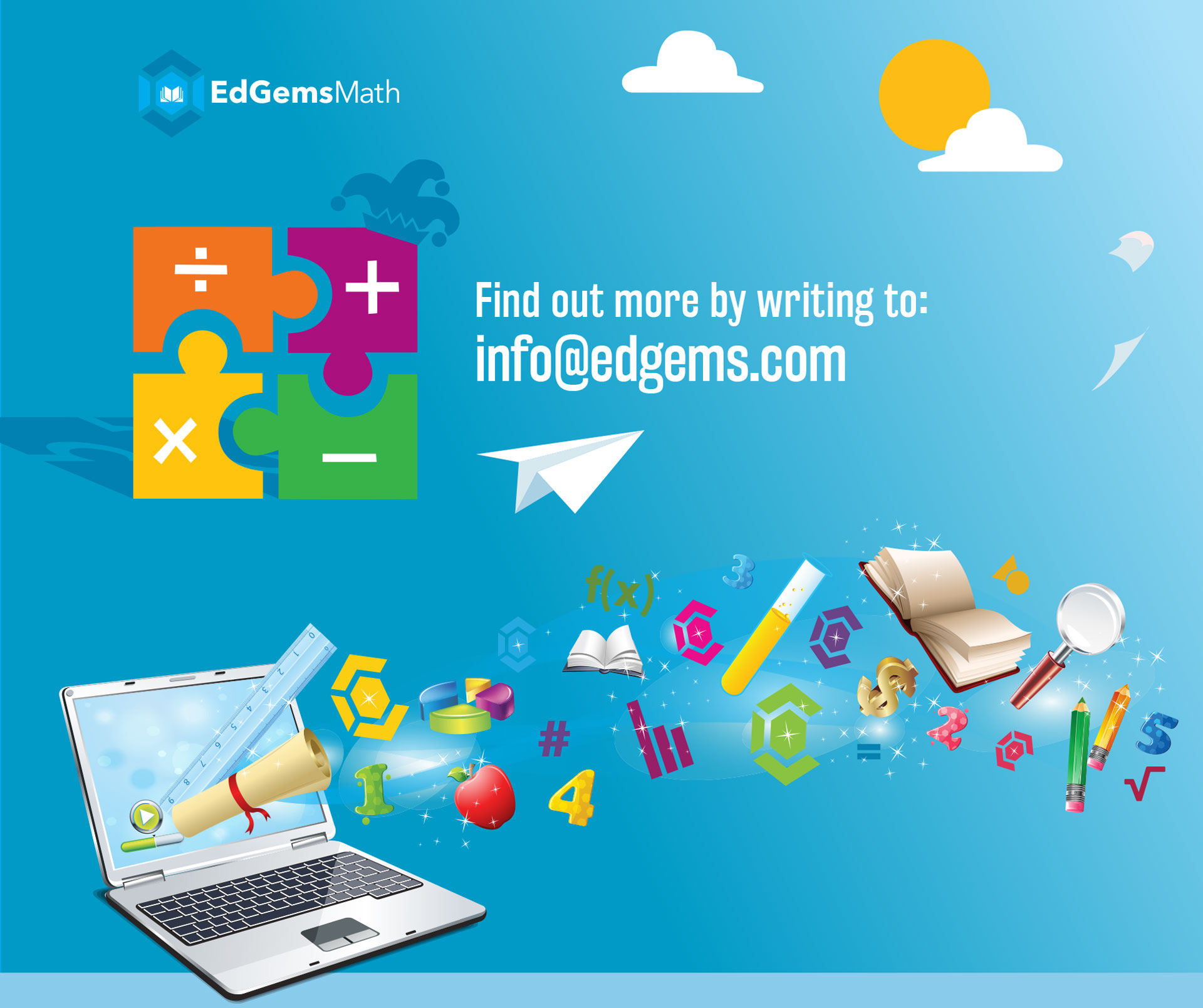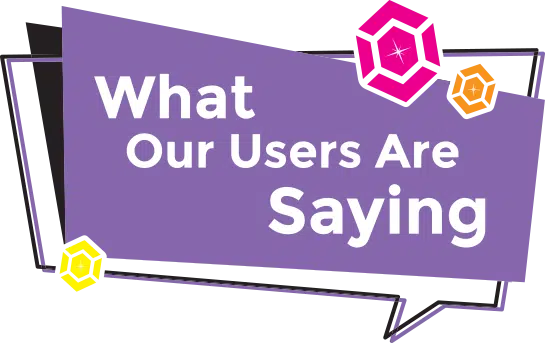

Fluency Boards are comprised of many key components:
Fluency Boards are provided for each unit, but teachers may choose to assign a smaller subset of boards over the course of a unit to differentiate learning. Each unit also includes a cover sheet for student notes and reflection as well as a pre- and post-assessment.

assessments per
target skill
routines
practice
Graphic organizers
for note-taking and
self-assessment
Reflection writing
stems
preview and review
Fluency Boards are provided for each unit, but teachers may choose to assign a smaller subset of boards over the course of a unit to differentiate learning. Each unit also includes a cover sheet for student notes and reflection as well as a pre- and post-assessment. Fluency Boards are provided for each unit, but teachers may choose to assign a smaller subset of boards over the course of a unit to differentiate learning. Each unit also includes a cover sheet for student notes and reflection as well as a pre- and post-assessment.

assessments per
target skill
routines
Target skill
practice
Graphic organizers
for note-taking and
self-assessment
stems
preview and review
Fluency Boards
Unit Cover Sheets
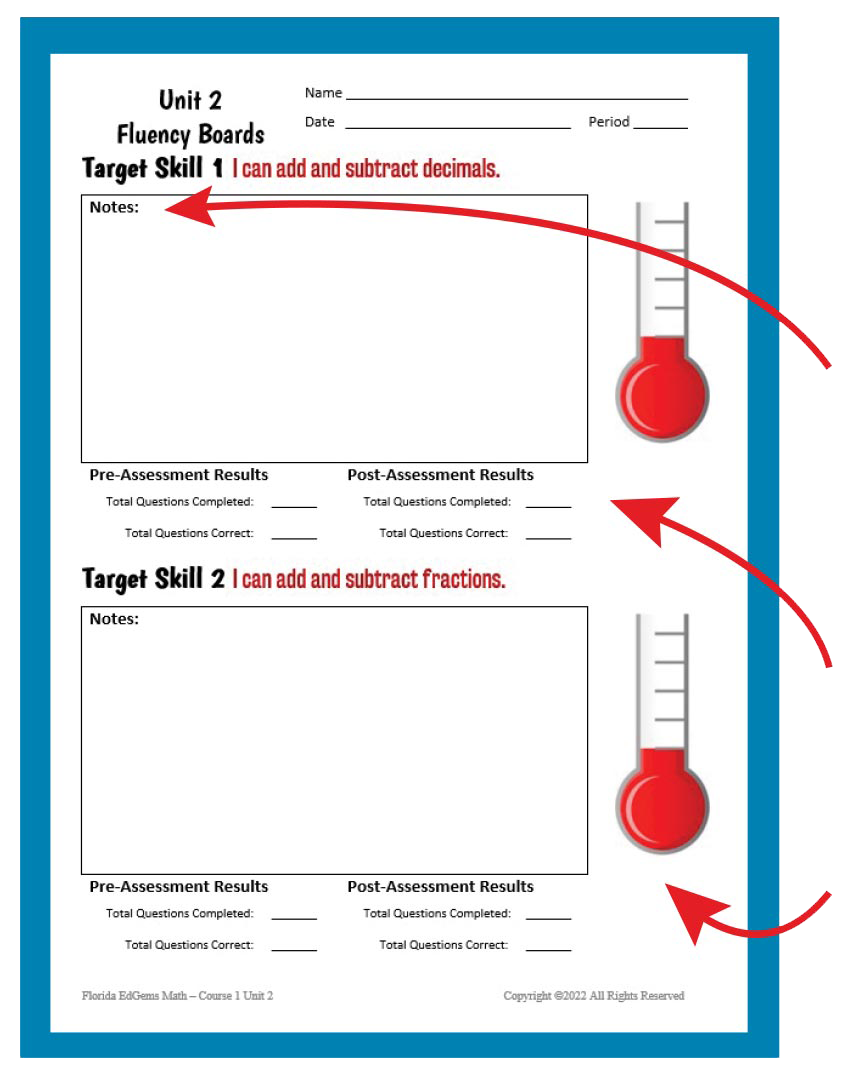
Notes
Students can take notes for themselves to refer back to throughout the unit. Teachers may have students utilize this space before or after the pre-assessment. Students can also add to or refer back to their notes periodically as they complete each Fluency Board.
Scores
Students can record their assessment scores by indicating the number of questions completed in the given amount of time and how many of those questions they got correct.
Self- Assessment
Students can reflect on their own ability and progress. Have students revisit and update their thermometer after completing each assessment and Fluency Board.
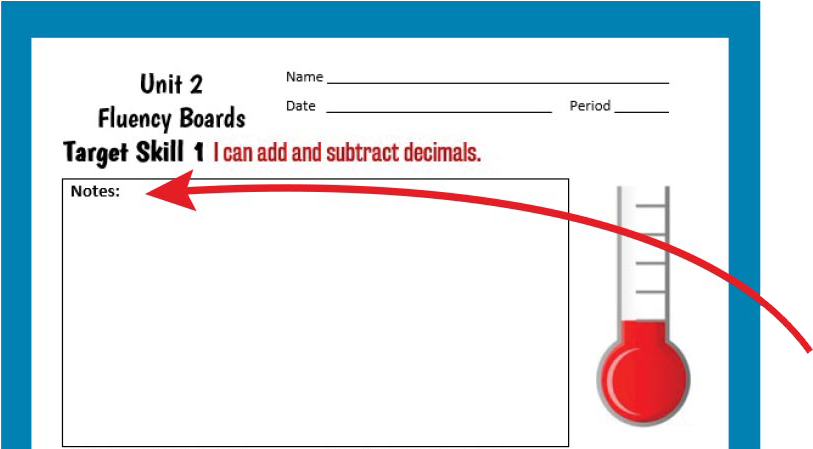
Notes
Students can take notes for themselves to refer back to throughout the unit. Teachers may have students utilize this space before or after the pre-assessment. Students can also add to or refer back to their notes periodically as they complete each Fluency Board.

Scores
Students can record their assessment scores by indicating the number of questions completed in the given amount of time and how many of those questions they got correct.
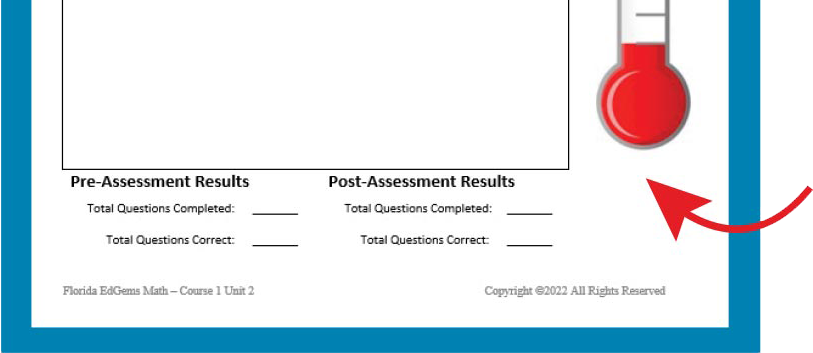
Self- Assesment
Students can reflect on their own ability and progress. Have students revisit and update their thermometer after completing each assessment and Fluency Board.
Fluency Boards
Target Skill
Assessments
Assessments
A pre- and post-assessment is provided for each unit to assess Target Skills 1 & 2.
The difficulty level of the questions corresponds to the difficulty level of the boards within the unit. For example, question #1 on the assessments reflects the difficulty level of the first Fluency Board of the unit and question #4 reflects the difficulty level found within the fourth Fluency Board of the unit. The complexity of questions on the fifth Fluency Board of the unit are not assessed in the pre- and post-assessments.
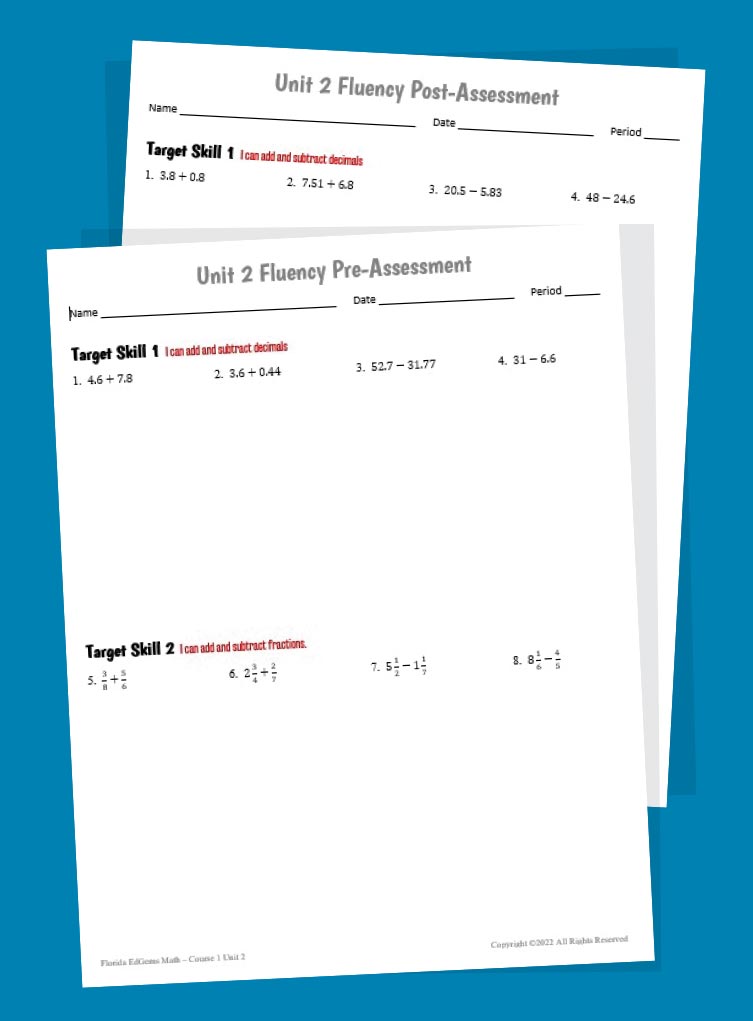
Fluency Boards
Daily Overview


Fluency Routines
Student discourse routines to build number sense.
Reflection & Sentence Stems
Students reflect on one of the Fluency Routines using one of the given sentence stems or additional prompts given by the teacher.
Target Skills
Two Target Skills are practiced in each of the 5 Fluency Boards for the unit. At the beginning of the year, Target Skills are prerequisite skills from previous grade levels. As grade-level skills are taught throughout the year, these concepts will be addressed as Target Skills.
The pre- and post-assessments for the Fluency Board assess students’ proficiency in these two Target Skills.
The five Fluency Boards in each unit progress in complexity with each board. This allows for differentiation based upon data gathered in the pre-assessment. The first through fourth board in a unit correspond to the question types found on the assessment. The fifth board contains challenge level questions beyond the scope of the assessments.
Mix it up!
Five additional skills are practiced in each unit; one skill per Fluency Board. The Mix it up! section focuses primarily on prerequisite skills, while sometimes addressing grade level proficiency skills. The Mix it up! skills are spiraled throughout the year. Mix it up! skills are not assessed on the pre- and post-assessments.
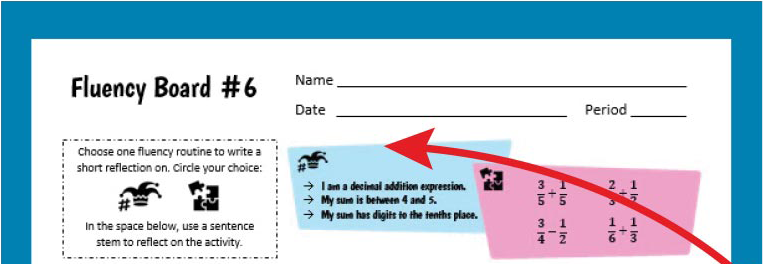
Fluency Routines
Student discourse routines to build number sense.

Reflection & Sentense Stems
Students reflect on one of the Fluency Routines using one of the given sentence stems or additional prompts given by the teacher.
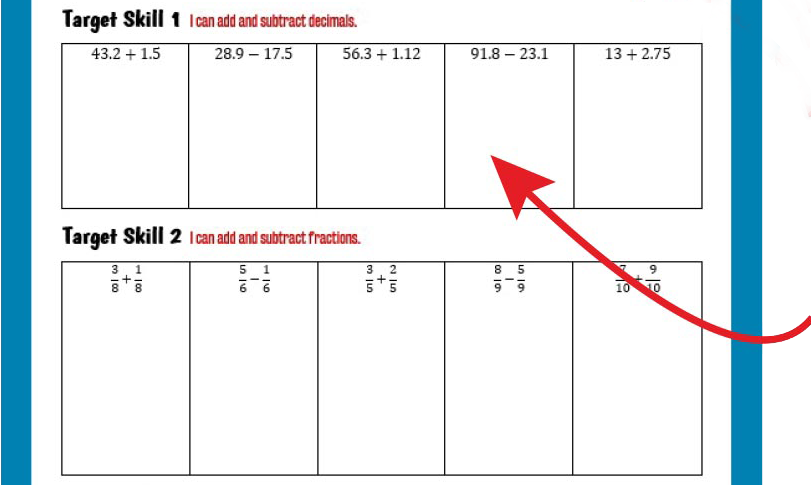
Target Skills
Two Target Skills are practiced in each of the 5 Fluency Boards for the unit. At the beginning of the year, Target Skills are prerequisite skills from previous grade levels. As grade-level skills are taught throughout the year, these concepts will be addressed as Target Skills.
The pre- and post-assessments for the Fluency Board assess students’ proficiency in these two Target Skills.
The five Fluency Boards in each unit progress in complexity with each board. This allows for differentiation based upon data gathered in the pre-assessment. The first through fourth board in a unit correspond to the question types found on the assessment. The fifth board contains challenge level questions beyond the scope of the assessments.

Mix it up!
Five additional skills are practiced in each unit; one skill per Fluency Board. The Mix it up! section focuses primarily on prerequisite skills, while sometimes addressing grade level proficiency skills. The Mix it up! skills are spiraled throughout the year. Mix it up! skills are not assessed on the pre- and post-assessments.

Fluency Routines
The EdGems Math Fluency Board incorporates Fluency Routines designed for teachers to engage students in mathematical discourse and build number sense. These routines promote sense making and deeper conceptual understanding for the target fluency skills students will practice. Each EdGems Math Fluency Board has two Fluency Routine activities, selected from the four structures below. Teachers may choose to do one or both Fluency Routines. Since Fluency Routines should only last approximately 5-7 minutes, it is recommended to do one Fluency Routine per day at most.
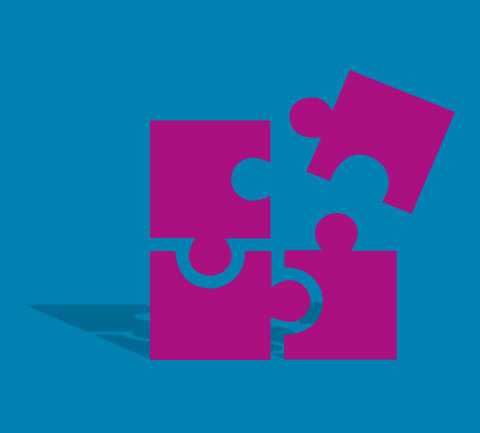

Which One Doesn’t Belong
Description: Given four expressions or values, students develop an argument to justify which of the four does not fit with the other three.
Teacher Instructions: Display the expressions/values or have students view these on their Fluency Board. Ask students, “Which one doesn’t fit?” Give independent think time, then call on students to share out their choices and justification. Additional discussion prompts could include; “Can you develop an argument to support why a different expression does not fit with the others?” or “I notice that no one made an argument for ____. Can you come up with a reason to support why this one does not fit with the others?”

Mystery Number
Description: Given a graphic (such as an area model or expression) with missing digits or values, students determine what digits or values appropriately complete the graphic.
Teacher Instructions: Display the graphic or have students view these on their Fluency Board. Ask students, “Can you determine what number(s) or value(s) are missing?” Give independent think time, then call on students to share out their choices and justification. Additional discussion prompts could include: “Can there be more than one correct answer?” or “Are there any values that cannot be used?”
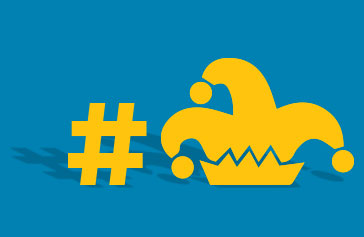
Number Riddle
Description: Students determine a number or expression that satisfies the given clues.
Teacher Instructions: Display the clues one at a time, or have students view all clues on their Fluency Board. Ask students, “Can you determine what the answer to the riddle is?” Give independent think time, then call on students to share out their choices and justification. Additional discussion prompts could include: “Can there be more than one correct answer?” or “Can you make up an additional clue that leads to the same answer?”

Number Talk
Description: Students solve a math computation problem using only mental math strategies, then share out their answers and solution pathway/strategy.
Teacher Instructions: Display the problem on the board or have students view it on their Fluency Board. Tell students they will attempt the problem using only mental math. When students have an answer, they should give a thumbs up. When most students have given a thumbs up, ask, “Who would like to share out an answer?” Record a list of solutions on the board. Then ask, “Who would like to defend an answer?” When called on, students will state which answer they want to defend and will give a detailed explanation of their strategy. The teacher will record the student’s solution pathway as they speak, asking clarifying questions as necessary, such as, “Can you tell me why you chose to…?” or “I missed that last step, can you please restate your process?” Call on a variety of students to defend several answers using a variety of methods.
Research

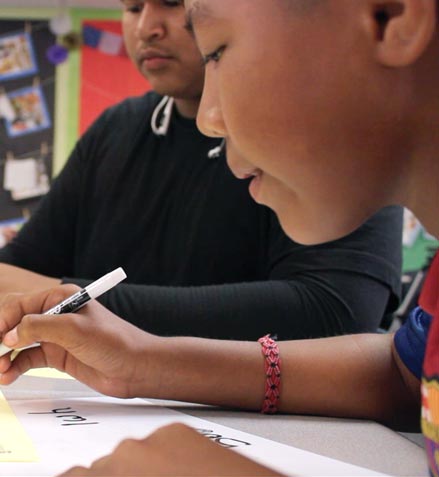

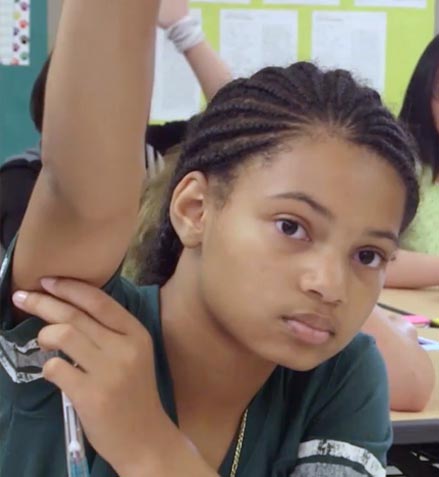
Building Number Senses
Through Fluency Routines:
Researchers studied students as they solved number problems in a critical research study (Gray & Tall, 1994). The students, aged 7 to 13, had been nominated by their teachers as being low, middle or high achieving. The researchers found an important difference between the low and high achieving students; the high achieving students used number sense, the low achieving students did not. The researchers concluded that low achievers are often low achievers not because they know less but because they don’t use numbers flexibly.
The four Fluency Board Routines used on the Fluency Boards (two on each) help students strengthen number sense and build flexibility with numbers through discourse and strategy-sharing. Using research-based strategies such as “number talks” allow students to build on their own understanding of numbers and become more flexible in their operations.
Building Procedural Skills
Using Fluency Board Target Practice:
In a recent study published by the Journal of Neuroscience, data demonstrated that brain mechanisms associated with arithmetic skills are related to performance on a broad ranging, educationally relevant measure of math competence at the end of high school. Thus, the importance of early arithmetic skills for math competence is not only evident at a behavioral level. Their acquisition appears to impact the construction of neurobiological architectures across development, which may in turn support the acquisition of high school-level math skills that have significant consequences for progression into higher education (Price et al., 2013).
EdGems Math Target Practice on each Fluency Board supports students’ acquisition of key foundational skills to support students as they apply these skills to more complex math concepts in future courses. The Target Skills align to the Major Clusters as specified by Achieve the Core (or, for the Florida copyright, Appendix B in the B.E.S.T. Standards).
EdGems Math Fluency Boards
as a Tier II Intervention:
Tier II offers more targeted, supplemental instruction than Tier I in order to remediate skill deficits, preteach and reteach skills for Tier I instruction, and to provide corrective feedback. EdGems Math Fluency Boards are structured specifically to strengthen students’ foundational skills and build number sense.
According to Assisting students struggling with mathematics: Response to Intervention (RtI) for elementary and middle schools (Gersten et al., 2009), “Instruction during the intervention should be explicit and systematic. This includes providing models of proficient problem solving, verbalization of thought processes, guided practice, corrective feedback, and frequent cumulative review.”
EdGems Math Fluency Boards are a powerful tool as an intervention within small groups or a specified intervention course as the Skill Boards provide teachers or assistants with explicit, systematic instruction and practice with built-in opportunities for the verbalization of thought processes through the Fluency Routines. Frequent cumulative review is built in through the “Mix It Up” section of each Board.
